What to do if cucumber ovaries turn yellow in the greenhouse, and why does this happen?
Unfortunately, not always lush flowering portends a rich harvest. For many gardeners, the ovaries of cucumbers turn yellow, and soon they begin to dry out and fall off. In such a situation, it is important to determine the cause of the deviation as soon as possible and take the right measures. Most often, the problem lies in gross care mistakes: lack of nutrition, light, moisture, violation temperature regime, improper formation of plants.
Soil problem, lack of nutrients
Like other vegetable crops, cucumbers are demanding on the condition of the soil. The soil for them needs fertile, not acidic, loose, with a pH of about 7. The optimal mixture is peat, humus and field soil in a ratio of 2: 1: 1. Wood sawdust is also added here.
Before planting cucumbers, soil processing is carried out, which includes the following points:
- removal of plant residues immediately after harvest;
- removal of the topsoil (4-7 cm);
- fertilization (potash, phosphorus, lime, manure);
- digging up the earth by 25 cm in the spring;
- mixing riding soil with humus (12 cm);
- abundant watering and covering the soil with a film to warm up immediately before planting.
When growing cucumbers in a greenhouse, the soil is disinfected with bleach for 2 years in a row. Methods for cleansing and fertilizing the earth can be different, but you cannot do without them at all. Otherwise, problems may arise at any of the growth stages, including drying of the cucumber ovaries. The plant simply will not have the strength to actively develop and bear fruit.
Of course, it’s impossible to turn back time; it’s impossible to re-prepare the soil. The only thing left is to feed the plants. At the same time, it is important to understand that nitrogenous fertilizers are needed to build up green mass, and potash and phosphorus fertilizers are needed for fruit growth. It is optimal to carry out complex fertilizing with nitrogen, potassium and phosphorus in a ratio of 2: 3: 1. For the entire season, this must be done at least 4 times: 2 weeks after planting cucumbers, at the beginning of flowering, during the period of fruit setting with an interval of 10-15 days.
If the tips of the embryos dry up and the plant discards them, the following mixtures are used (per 10 liters of water):
- 1 teaspoon of urea, superphosphate, potassium sulfate;
- a glass of bird droppings and 1 tsp. superphosphate;
- 1 tbsp. l. nitrifocks;
- 0.5 l mullein, 1 tbsp. l. potassium sulfate;
- 5 g boric acid;
- 200 ml yeast solution (12 g of dry yeast and 200 g of sugar are poured into 5 liters of warm water and infused for 6-7 days).
In cold weather, the absorption of nutrients through the roots deteriorates, so foliar dressing is carried out. When the leaves and ovaries turn yellow, use:
- 15 g of urea dissolved in 10 liters of water;
- "Brilliant green" - fermented infusion of weeds, diluted 1:20;
- 1 tbsp. l. azofoski on a bucket of water;
- 35 g superphosphate per 10 liters.
You can also buy special complex preparations: "Zircon", "Epin", "Ideal", "Fertility" or others.
Lack of nutrition for other reasons
During the period when cucumbers are tied, active absorption of nutrients begins. If there is not enough nutrition for all the embryos, the plant discards them. This can happen for the following reasons:
- too dense planting;
- excess side shoots, improper bush formation;
- untimely collection of ripe fruits.
For the normal development of cucumbers in the greenhouse, it is important to follow the planting scheme according to the selected variety. Plants are recommended to be planted in 1-2 rows.On average, the distance between the bushes should be 0.5 m, and the width of the paths should be 0.8 m.
Further, so that the cucumber does not experience a lack of nutrition, a bush is formed:
- In the initial growth zone, lateral shoots and ovaries are removed, leaving only leaves (2-3 nodes).
- Starting from the 3rd node, the shoots are pinched after the first cucumber.
- In the next 3-4 tiers, 2 fruits are left on the shoot.
- Further, as it grows, the shoot is left 1 fruit longer.
- When the plant reaches 1 m, pinch the top.
Thus, the plant does not spend a lot of energy on the lower shoots, it is well ventilated at the roots.
Varieties with a bouquet type of ovaries are formed in a slightly different way - in one stem with the removal of all lateral shoots or by blinding the first 6-7 nodes and tying the upper lashes.
So, if the cucumbers do not tie well and do not growmaybe they should be seated. For this, the plant is dug up with a large clod of earth. If the problem of lack of nutrition has arisen due to improper formation of the bush, it is carried out immediately. It is also necessary to remove all tendrils and remove ripe fruits.
Inappropriate temperature or lighting
During fruit setting, the cucumber becomes especially tender and receptive. Sharp temperature changes, a lot of shade or, conversely, hot rays can negatively affect the growth of fruits.
If the ovaries turn yellow and dry, the causes of the phenomenon may be as follows:
- too high temperature and bright lighting;
- sharp and severe cold snap;
- cloudy weather for a long time;
- watering with cold water.
Despite the fact that the cucumber is warm and light-loving, moderation should reign in everything. The temperature during flowering and fruiting can range from 25 to 30 degrees during the day and from 18 to 20 degrees at night.
Sometimes in the axils of cucumbers, an excessive amount of ovaries is formed, which is not provided by nature for this variety. Then it is quite natural that the plant will dump the excess. This is a natural process. No more than 30 fruits can develop on one shoot.
Creating comfortable conditions for the development of plants is not easy, but rewarding work. Even if a cucumber grows in a greenhouse, you need to adequately respond to a change in weather:
- use heating when the temperature drops below 15-17 degrees;
- lengthen daylight hours with phytolamps if the weather is cloudy;
- completely remove the shelter at temperatures above 35 degrees and partially at + 25-30 ° С;
- in case of heat and drought, place containers with water next to cucumbers and increase watering, as well as install a canopy that creates partial shade, and spray the leaves in the evening.
Lack of moisture
Another common reason why ovaries dry and fall off on cucumbers is insufficient watering. Fruits are 95% water, so moisture deficiency is destructive for them. To understand that this is exactly the problem, the following symptoms will help:
- the leaves of the plant have lost color, turned yellow, bent up or down;
- there are few ovaries on the plant;
- embryos appear yellow, poorly filled.
During flowering and fruiting, you need water cucumbers once every 2-3 days, and in dry weather - every day. One bush is allowed from 3 to 5 liters. In this case, watering must be carried out strictly in the morning (until 10 am) or in the evening. During the day, moisture evaporates quickly, in addition, the plant can get burned if droplets fall on the leaves. The optimum water temperature is 25-27 degrees, and the depth of soil moisture is 25-50 cm.
To solve the problem of drying the ovaries, in most cases it is enough to increase watering.
Incorrectly selected variety
Self-pollinated or parthenocarpic are suitable for greenhouse cultivation. varieties of cucumbers. If the variety does not match, the ovary without bees or artificial pollination will turn yellow and fall off. What can be done in such cases?
- Open the greenhouse for the bees and lure them with sweetened water (spray the plants).
- Arm yourself with a soft brush and alternately touch the middle of the male flower, and then the female one.
- Shake the whips lightly.
It should be borne in mind that in heat and drought, pollen becomes sterile. Therefore, it is important to adhere to all conditions for growing cucumbers.
Falling ovaries due to illness
In the greenhouse, if it is insufficiently processed and disinfected, the risk of infection of cucumbers increases diseases... The air in it is easily waterlogged and overheated. In addition, many in an attempt to plant as many plants as possible save space and make the planting too cramped.
What diseases can cause drying of the ovaries?
- Peronosporosis (downy mildew). It manifests itself first of all on the leaves of plants - they become covered with light spots, and then turn brown. To cure cucumbers, you need to stop watering for a week, and then treat the lesions with Topaz or an analogue.
- Fusarium. A fungal disease in which the supply of nutrients is blocked. As a result, the plant begins to die and shed the ovaries. For Fusarium, the brown color of the vessels on the leaf cut, as well as the general weakened appearance of the plant, is indicative. It is impossible to save the affected plant, only prevention is effective: land replacement, crop rotation and disinfection.
- Ascochitis. The disease enters the active form during the fruiting period. It is difficult to notice it earlier, because the plant retains the ability to grow. With ascochitis, the embryos on cucumbers rot, then the leaf and stem are affected - they become covered with watery green spots, gradually turning brown and then whitening. Treatment consists in treating sore spots with a mixture of chalk and copper sulfate in a 1: 1 ratio. Strongly decaying parts of the plant are removed.
Regardless of the cause of the yellowing of cucumber ovaries, it is easier to prevent the problem than to solve it. To do this, it is important to adhere to the cultivation technology: think over a place for the garden, choose the right variety, process the soil, apply fertilizers, water the plants in a timely manner, etc. Then the abscission of the embryos will be minimal, and the cucumber will delight with the harvest.
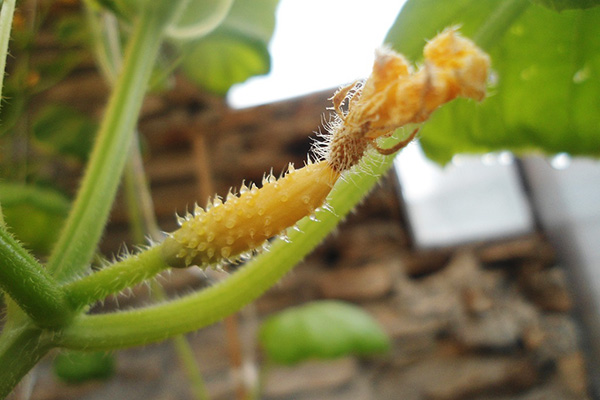
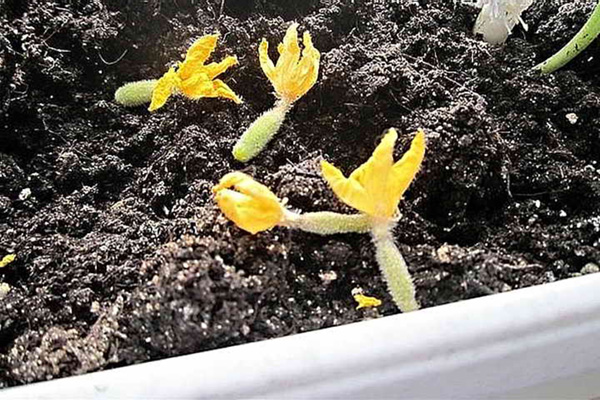
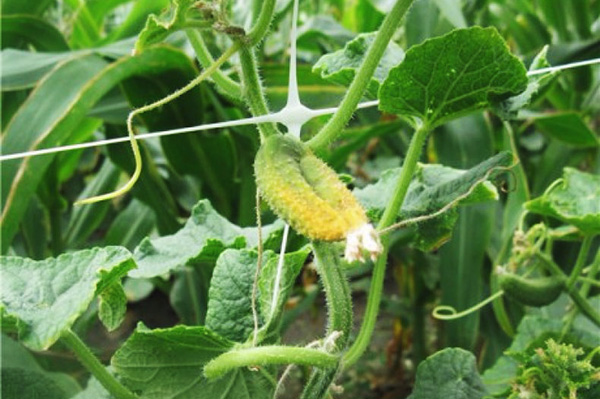
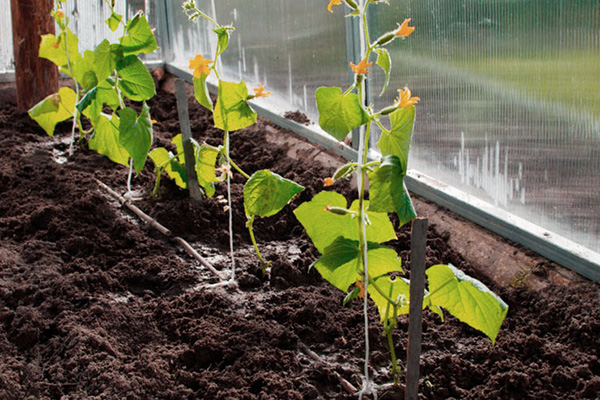
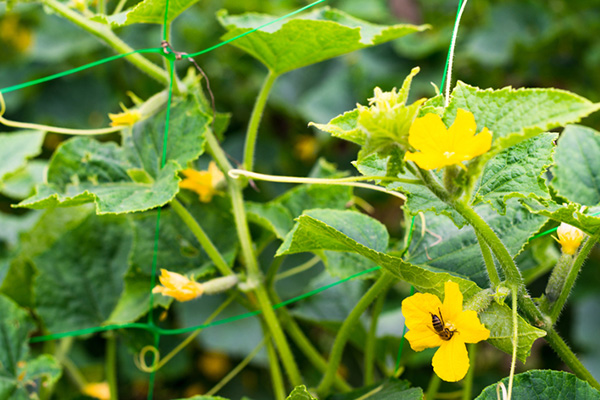

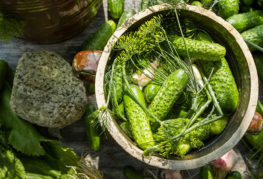
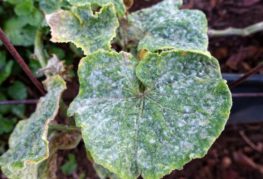
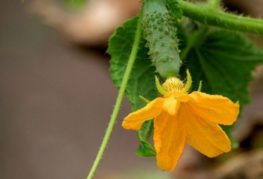

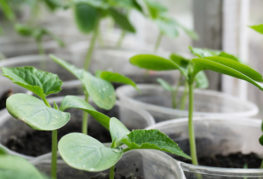
and will be published shortly.